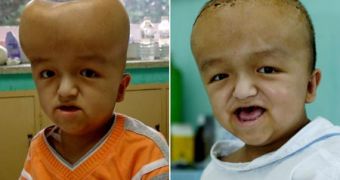It may sound less familiar to you than the Down syndrome, but it is a birth defect much more common than the latter. One in 500 newborn children experience hydrocephalus ("water in the head" in Old Greek), more commonly known as "water in the brain". Over 700,000 children and adults in the US suffer from this condition, being a leading cause for juvenile brain surgery.
More than 180 factors have been detected to cause the issue, the main one being brain hemorrhage connected with premature birth. Genetic overproduction of the CSF can also produce hydrocephalus, and also head injuries or infections. The condition induces abnormal accumulation of cerebrospinal fluid (CSF) in the cavities (ventricles) found inside brain. This causes higher intracranial (inside the skull) pressure and progressive enlargement and deformation of the head, convulsion, and mental disability.
Since 1960, the standard treatment for hydrocephalus has been the cerebral shunt. The shunt requires neurosurgery, fact that can cause brain damage. About 50% of all shunts fail in less than two years, and further surgery must be done.
Hydrocephalus usually blocks CSF drainage in the ventricles or in the subarachnoid space between the brain and the skull, which normally is continuously moved through the brain and its ventricles and the spinal cord, being sent back into the blood stream.
The combo picture presents a severe case of hydrocephalus (a Chinese patient, Liu Jing, 9 years old) before and after a surgery to reconstruct his skull deformed by the condition at a hospital in Xiamen, Fujian Province (eastern China) on August 2, 2007. The boy from Shandong Province underwent a 13-hour craniplasty (skull remodeling) surgery on July 15, 2007, which was successful.
Hydrocephalic infants and young children have huge heads, because their individual skull bones are not completely joined.

 14 DAY TRIAL //
14 DAY TRIAL // 
